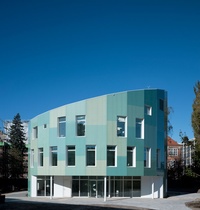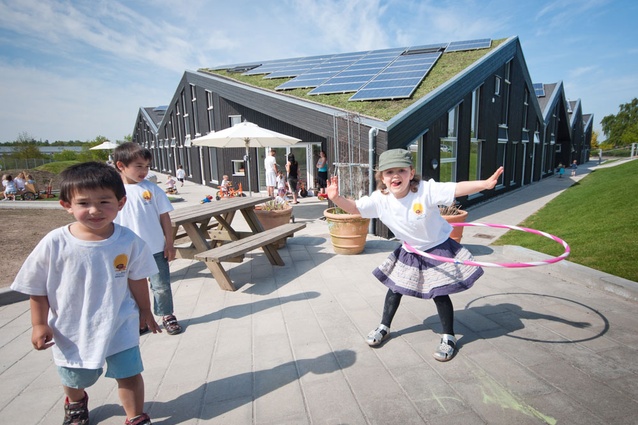Q&A: Michael Christensen, CCO Architects
Architect Michael Christensen answers some questions about designing "active houses" – buildings that give more than they take – in Denmark.

Why were you interested in working on Green Lighthouse and Sølhuset?
The design foundation of our firm is based on the creation of sustainable buildings that offer a healthy indoor climate for end-users. Through an integrated work process of collaborating with experts in the fields of sustainable engineering and energy optimisation, we incorporate design, environment and end-user in our early design considerations. In our view, architecture applies to all aspects of a building. From the beginning, the design concept is closely linked with the inclusion of energy-optimising choices. We have developed a number of low-energy projects with very ambitious environmental agendas, where design and function are considered together; Green Lighthouse and Sølhuset are only two examples. Our interest in these projects stemmed from the belief that unique and characteristic solutions occur when location, function, culture or climate challenges the architectural intention; sustainability through integrated design.
In this part of the world we talk about passive design, but both of these projects are described as “active”. Why the difference in terminology?
An Active House is based on holistic thinking and interacts positively with the environment, considering context, local resources and the overall environmental impact throughout its lifecycle. An Active House is energy-plus, meaning it produces more energy than it uses. Sølhuset, for example, will eventually repay the CO2 cost of its materials and construction. All that building’s energy is renewable, from sources integrated into the building or from a nearby collective energy system and electricity grid. Another focal point is creating a healthy indoor climate for users, with optimum daylight conditions and fresh air, while minimising the environmental impact.

Green Lighthouse and Sølhuset are quite different in built form — one is circular, one is triangular. Is there a ‘best case scenario’ for a building’s form if you want to achieve maximum efficiency?
The design changes according to the site. You consider a number of parameters, like how to achieve optimal daylight conditions for the locality, environmental issues and aesthetic design. There’s not one solution. One could say ‘the best case scenario’ is not to have a finite design approach, but rather to have the flexibility to design each building according to its future use and optimal daylight conditions.
Natural ventilation and daylight use aren’t new concepts, but new technology for managing indoor climate can seem complex. Is that a deterrent to clients?
In our experience, both clients and future occupants have a keen interest in environmentally friendly projects, and to occupy buildings with healthy indoor climate and lots of daylight. There is, of course, a ‘getting-used-to stage’, as some of the technology might be new, however, mostly this is received with curious anticipation.
Does Denmark’s climate support the use of just naturally ventilated buildings?
As it is a new technology it is very much developed to suit the Danish climate. It is hot with long daylight hours in the summer and very cold and dark in the winter. The underground seasonal heat storage is therefore a really good way to keep some of the surplus heat from the long summer days, however the mixed-mode is, for the time being, necessary.










